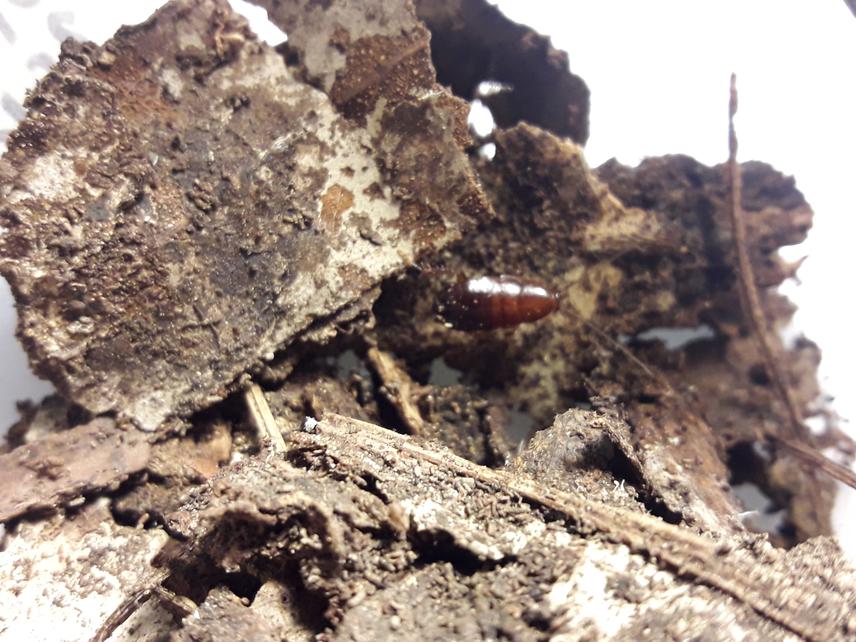Constanza Schapheer Carrasco
Other projects
23 Jul 2015
Conservation Status Assessment and Outreach on Native Cockroaches in Mediterranean Matorral, Central Chile
18 Jan 2017
Molukia Project: The Ecosystem Role of Native Cockroaches in the Chilean Matorral: Research, Education and Outreach as an Integrated Conservation Strategy
We propose the study of Eucalyptus plantations, with leaf litter and native plant understory, as complementary habitat for Moluchia, as a strategy for their conservation. We will evaluate biotic (microbiota) and abiotic parameters that could allow Moluchia to thrive in plantations, assessing their contribution to organic matter decomposition and transport of soil and litter beneficial microorganisms, to provide guidelines contributing to the conservation of these native insects. We will also publish a Manual for leaf litter insect’s conservation in forest plantations and management, which favours their establishment and development in a productive environment.

Native cockroach on leaf litter. © Constanza Schapheer.
Native cockroaches are fundamental for Earth ecosystems recycling. In Chile, genus Moluchia (Blattodea: Ectobiidae) is a representative lineage, threatened by urbanization. Previously, we categorized Moluchia brevipennis as vulnerable (IUCN criteria). Despite central Chile is considered a global biodiversity hotspot with conservation priority economic activities are focused on the exploitation of raw materials, with agriculture and forestry among the most important ones. Under this scenario, it is imperative to allow native biodiversity to survive inside productive landscapes by generating strategies enabling to include these areas as potential complementary habitats, as suggested by “land sharing”. This project is a consequence of the research that we have been conducting, thanks to RSG N°18114-1 and N°21286-2. I am developing my PhD thesis continuing working on conservation of native cockroaches.
Previous work has allowed us to have an insight on the ecosystem role and conservation status of Moluchia species in central Chile. I have observed that these insects may use Eucalyptus plantations as complementary habitats to native biome patches, as long as these managed habitats keep leaf litter and native plant understory. In plantations, at the same time, native cockroaches may contribute to leaf litter decomposition and soil development, which is the functional importance of these in forest landscapes (native and managed). This has been demonstrated to be associated with cockroach’s microbiota, suggesting that detritivorous’ microbiome is paramount for this role in the same way microbial communties provide a diagnosis of ecosystem state. Considering all this, I am proposing the study of links between native cockroaches, microbial communities and the mosaic between native biomes and forestry areas.
The goal is to disentangle the conditions that make a plantation a suitable complementary habitat for native cockroaches. Moreover, this work will provide evidences on the situations that lead to human derived environmental degradation, allowing us to take measures and/or suggest managements to minimize the effects of productive activities.